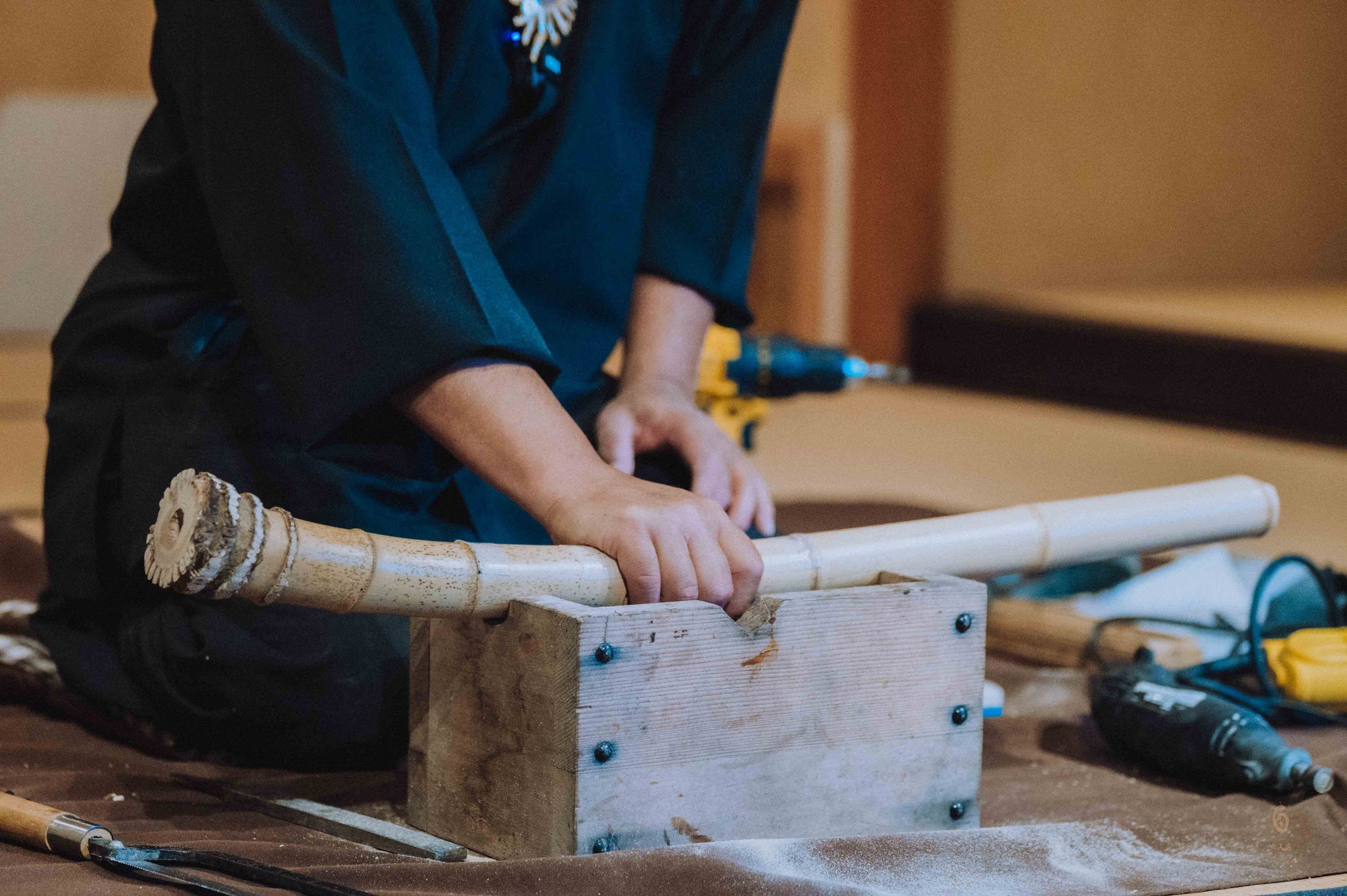Crafting the Shakuhachi Bamboo Flute of Japan: Demonstration & Performance by Alcvin Ryūzen Ramos
Image credit: Xun Yu 六入處感官美學研習社 The Six Sensorial Lab
On a warm evening in July, we were treated to a truly enchanting experience getting to know all about shakuhachi 尺八 - a bamboo, end-blown flute developed in 16th-century Japan - with the talented Alcvin Ryūzen Ramos.
Images credit: Xun Yu 六入處感官美學研習社 The Six Sensorial Lab
Set in the tatami tea room at SaBi Tea Arts, Alcvin began the workshop by explaining the difference between the two main types of shakuhachi, the refined ji-ari (“with ji paste”) flute, with its lacquered bore that allows for precise tuning, and the natural, uncoated ji-nashi (“without ji paste”) version that requires careful calculation, a bit of luck, and a deep sense of oneness with the bamboo to tune properly.
All Images by: Xun Yu 六入處感官美學研習社 The Six Sensorial Lab
He then proceeded to demonstrate each step involved in crafting the ji-nashi version, explaining the various tools and techniques as he went. What began as a simple, hand-harvested length of bamboo, was transformed before our eyes into an artfully crafted instrument, releasing a new note of the pentatonic scale as each finger hole was drilled into it until it was ready to play. And play he did. The sounds of the newly formed shakuhachi, brought to life by such a skillful and spirited musician, had us mesmerized. Thank you Alcvin for sharing your knowledge and passion with us. It’s an evening we won’t soon forget!
Images credit: Xun Yu 六入處感官美學研習社 The Six Sensorial Lab
About the Educator:
Born and trained in Japan in the classical Zen shakuhachi tradition, Alcvin also studied shakuhachi construction with several of Japan's finest makers. He is currently studying with Miura Ryūho in Akita. Alcvin lives on the Sunshine Coast of BC, where he teaches and makes shakuhachi flutes and bamboo-inspired jewelry in his workshop in Madeira Park. For more information about Alcvin you can visit: alcvin.ca
We gratefully acknowledge support from the Community Fund of the Japanese Canadian Legacies Society.










